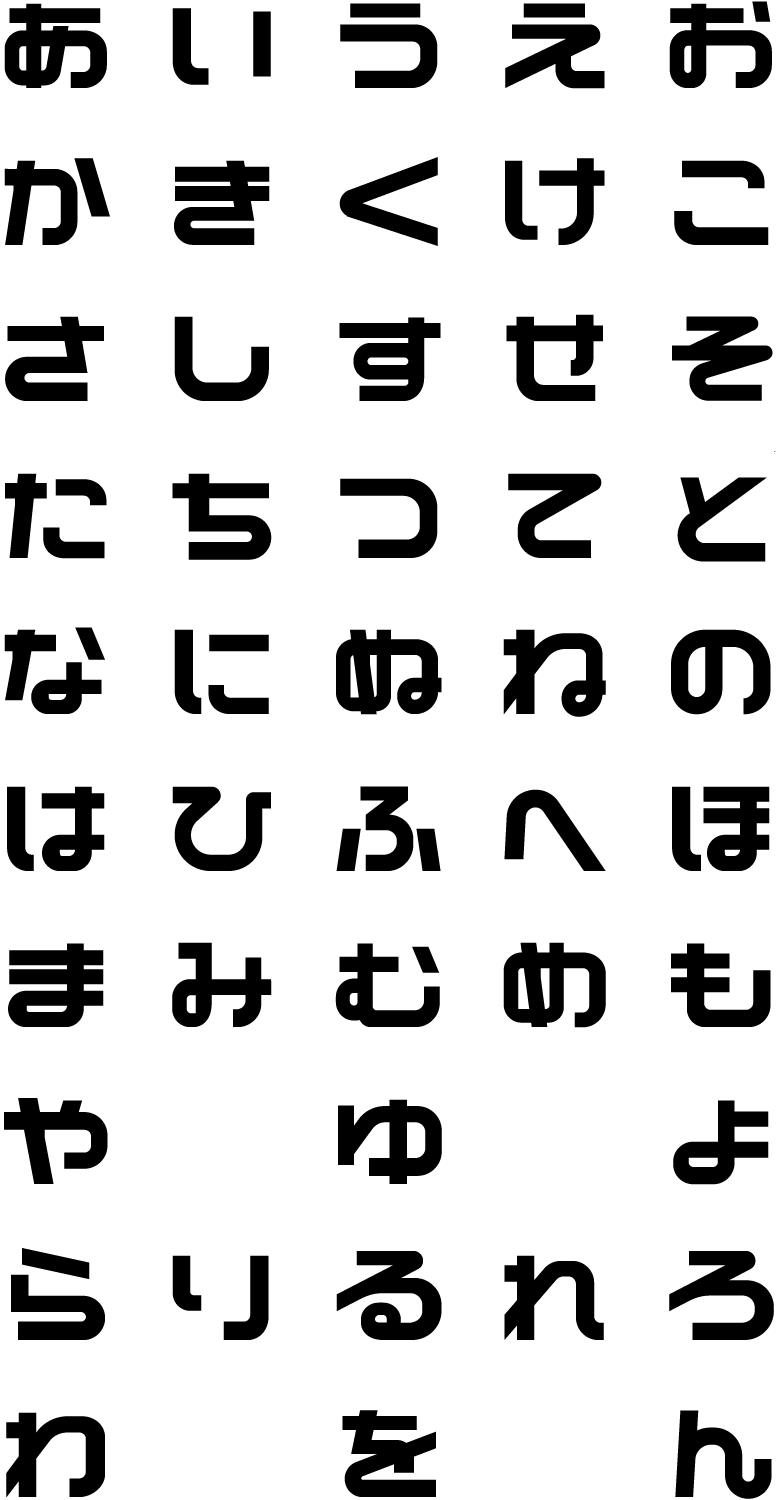斜めになった明快なカタカナがレトロな印象だ。文字の角のRのサイズが一律同じではなく、各部でRのサイズを変え、デザインの完成度を高めている。文字のラインの太さ、角のRが親しみやすさを醸成しており、看板のアクセントになっている。

こちらのフォントデータをパソコンに入れることで、いろいろなアプリケーションでご使用頂けます。「DONATE & DOWNLOAD」を選択すると、のらもじ発見プロジェクトを資金面で応援することができます。(廃業してしまったお店や、寄付をお断りされるお店が多いため、現在お店への支払いは停止しております。)無償でのダウンロードをご希望の際は、SNSでのシェアにご協力ください。
You can download the font and use it in your computer. By selecting DONATE & DOWNLOAD, you can financially support our project. (Due to the fact that many stops have gone out of business or refuse to accept donations, we are currently suspending payments to shops.) If you want to download for free, please help us by sharing the project via SNS.
「山口陶器店」は700年前ほどに7軒の家が立ち、飯田町ができた頃から店のルーツがあるという。先々代の店は「山口富士商店」といい、陶器以外にも炭や木炭などの卸売をしていた。現店主の外美子さんは東京の銀行を退職してお店をついだ。看板は昭和50年頃に地元の看板屋さんが作ったと思われる。商店街の自営業者は話好きで、当時は毎日のようにお店に話をしに来ていたそう。「物を買うとかじゃなくて、もう本当に集会場みたいになってました。座る場所もないから、みんな勝手に椅子なんか持ってきて…」現在ではお店を訪れるのは地元の高齢者の数人。売上の大部分はオンラインでの販売だという。奥の大きな蔵には、昭和時代の古い器や窯が多く眠っている。レトロな品物は人気だそう。予約待ちの品物もあるという。飯田町商店街組合の理事長でもある外美子さん。町内に配布物を届けたりもする。「周囲のみなさんに助けられて今があるので、自分が協力できることはできるだけ協力しようと思いました」昔から地元をつないできたお店なのかもしれない。
“Pottery Shop Yamaguchi” has its roots in the beginning of Iida town beginning with seven houses standing on the street around 700 years ago. The shop of the previous generation was called “Yamaguchi Fuji Shop,” in addition to pottery, they sold charcoal and other products. The current owner, Ms. Tomiko, quit a bank in Tokyo and took over the shop. The signboard was probably made by a local sign maker around 1975. The people of shop owners in this town enjoyed talking and they came to the store every day to talk at that time. “It wasn’t about buying things,“ he said. My shop really became like a meeting place. There was no space to sit, so people brought their own chairs…” Today, Only a few elderly local residents visit her shop. The majority of sales come from online sales. There are many old vessels and kilns made in the Showa period (1926-1989) in a large warehouse in the back of her shop. She said that retro items are popular. Some items are on a waiting list. She is also the president of the “Iida Town Shopping Street Association”. She also delivers handouts to the residents of the town. “I am today thanks to the help of everyone around me, so I think I try to help out as possible as much.” This shop may have been connecting the local community for a long time.



